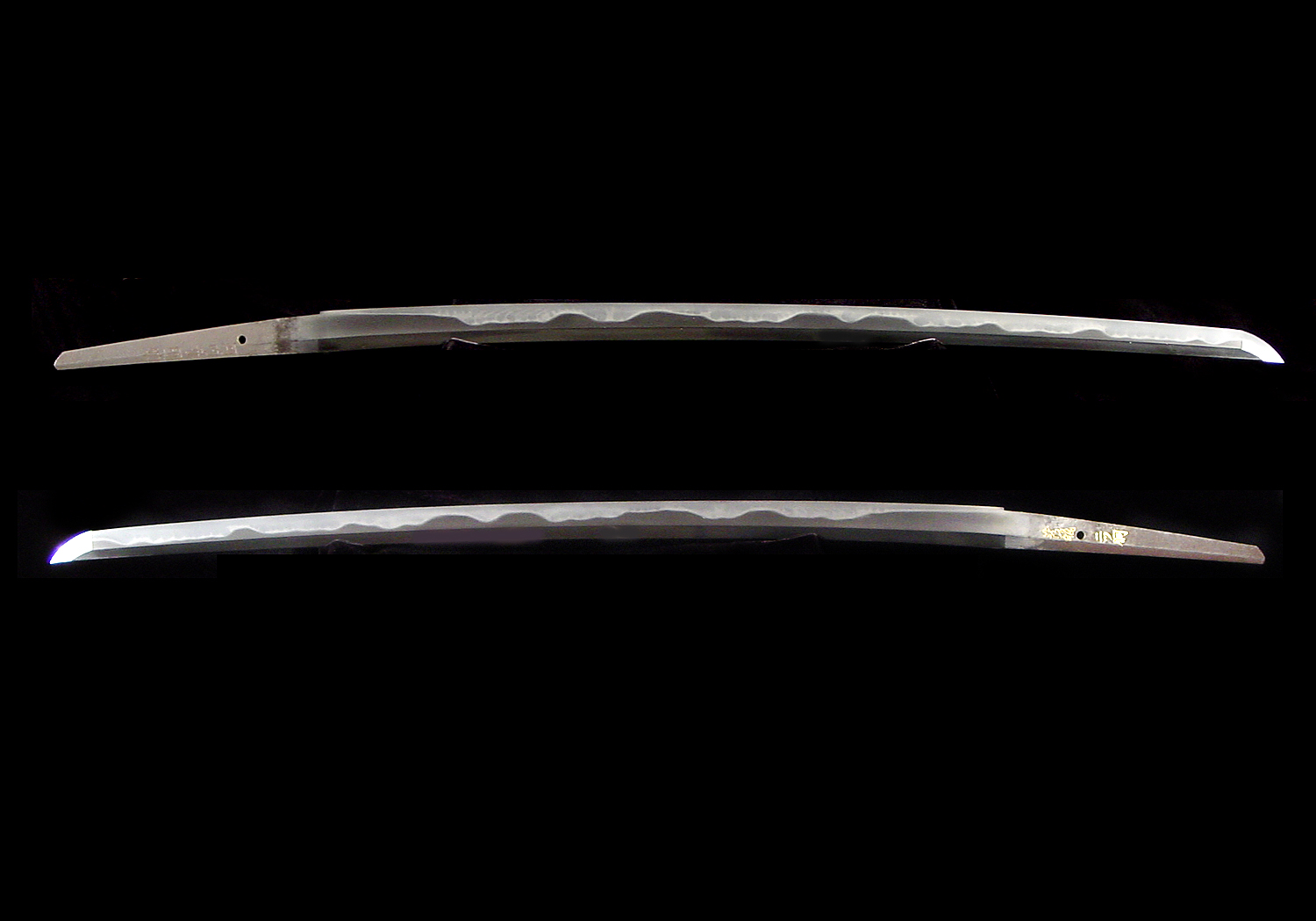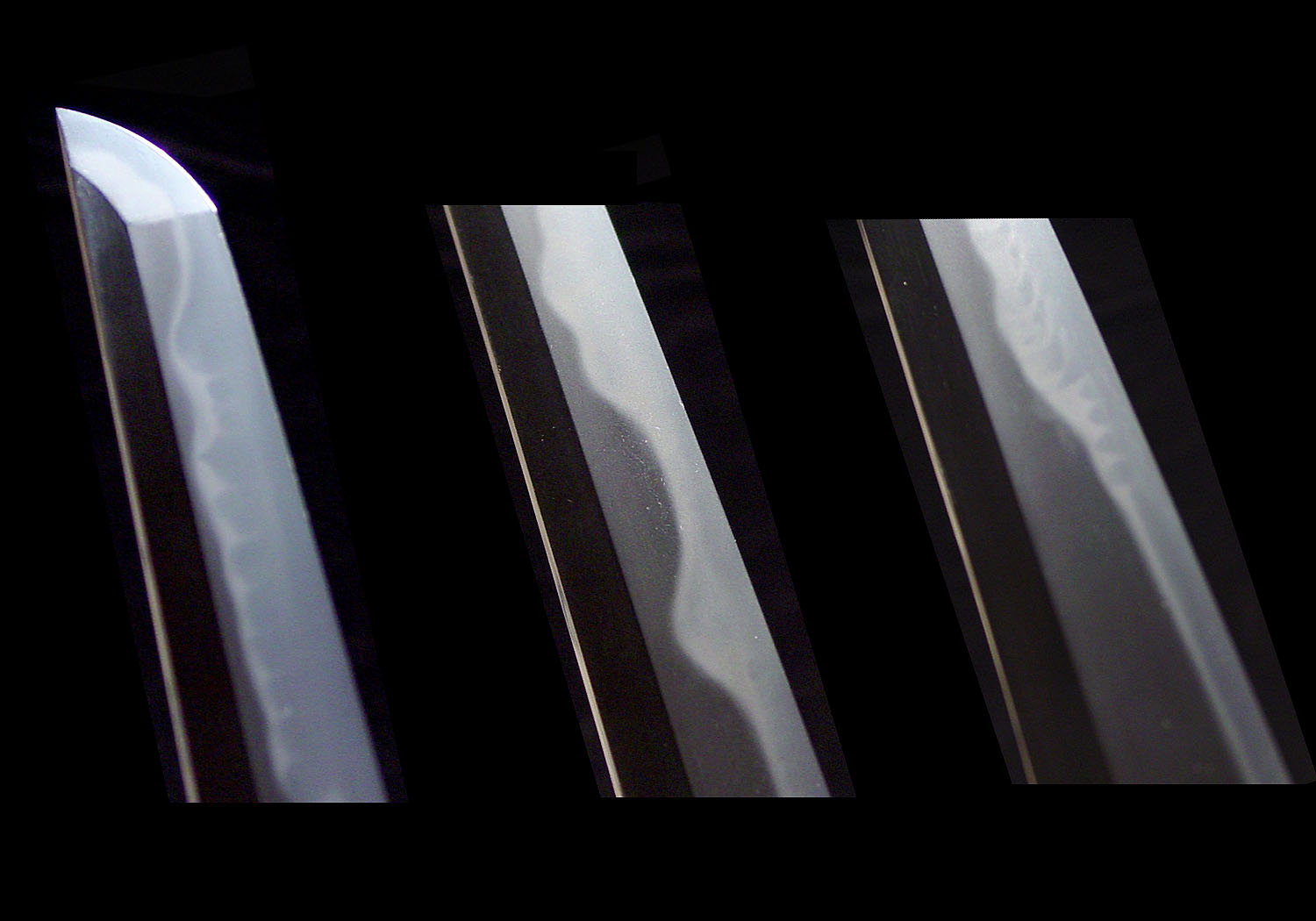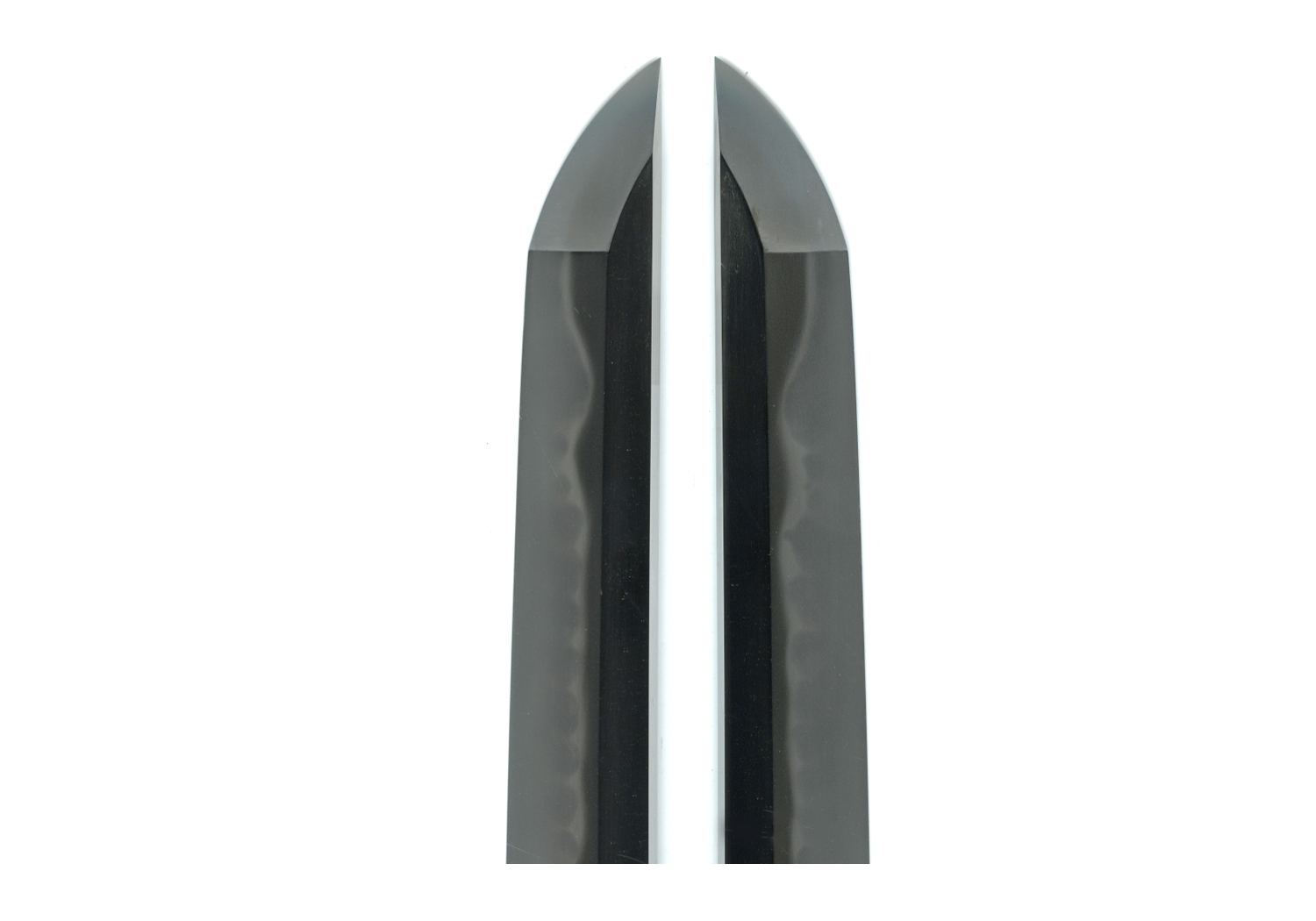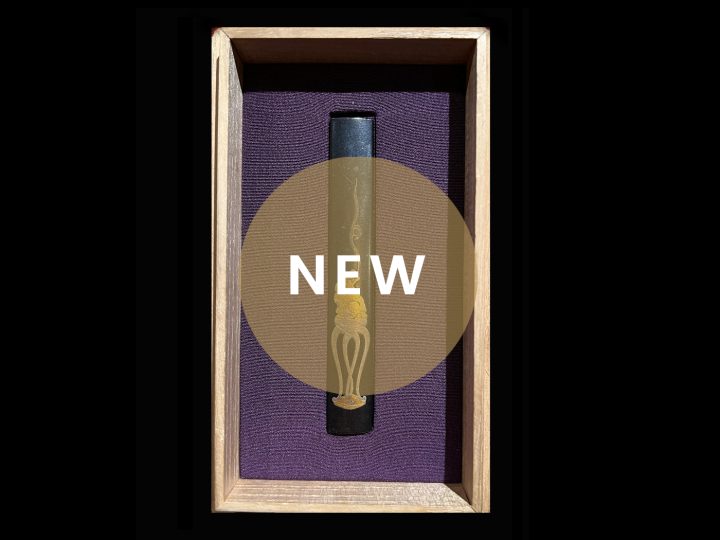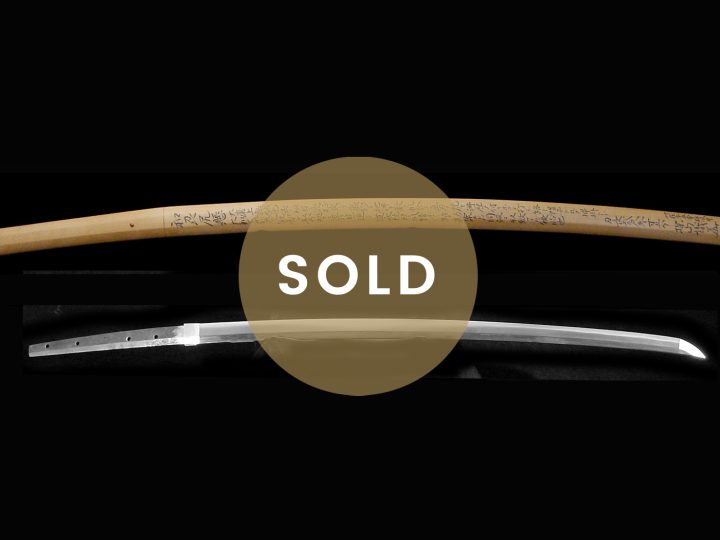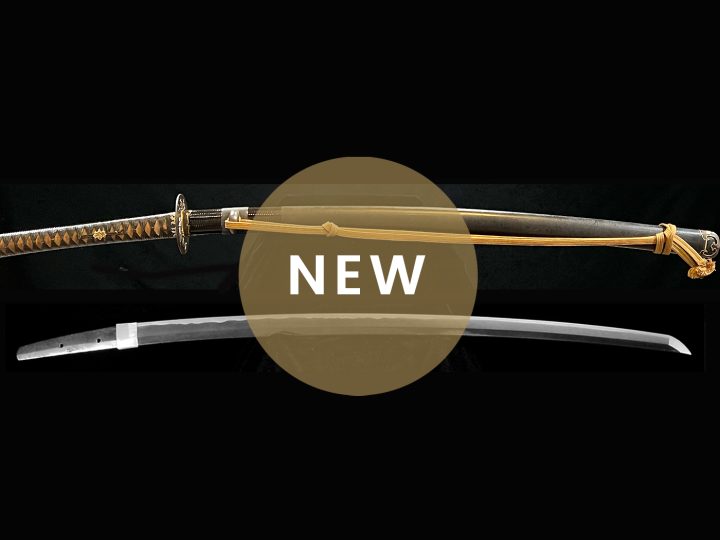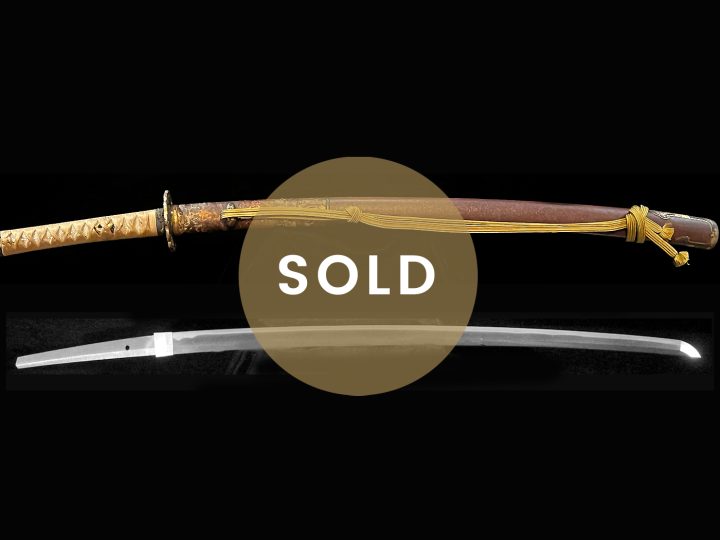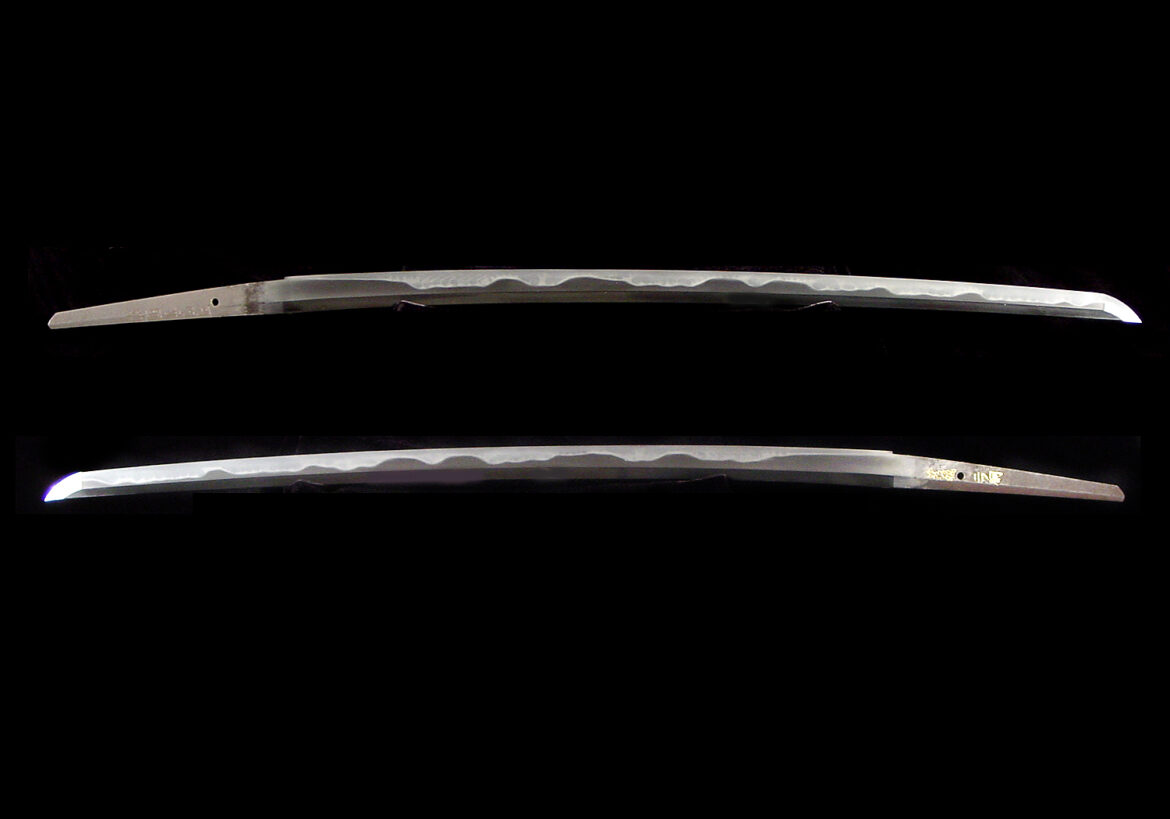
The second generation Kawachi no Kami Kunisuke (河内守国助) is popularly known as Naka-Kawachi (中河内). The word, “naka”, in Japanese means “in-between”. In this case, giving him the nick-name of Naka-Kawachi (中河内) indicates that he was in-between the first generation (Shodai) and the third generation (Sandai) of smiths by this name. He was the son of the Shodai Kunisuke (初代国助) but few or no details as to the exact date of his birth, the year of his recognition as a title holder of this smith name, etc, are known. The only date that appears with some certainty is that he passed away in the 11th year of Genroku or 1698.
Naka-Kawachi (中河内) made both katana and wakizashi but he left very few tantô. His jigane is a wonderful ko-itame, while the hamon exhibits brilliant chôji patterns containing jûka and kobushi-gata (fist patterned) variations with the nioiguchi of the clearest nature. There are many ashi as well as some ko-nie contained in his hamon. There are also suguba works, although only on a very limited number of blades. The popular name kobushi-gata is given to his chôjivariation because it has an appearance of multiple fists put together in a clump.
That being said, however, it is important to note that no matter how wild or exceptionally irregular hamon patterns Naka-Kawachi (中河内) might have tempered in the upper areas of the blade, he always started his hamon with a long and straight yakidashi and ended it in a smooth curve with a ko-maru bôshi. We call his type of yakidashi the Osaka type of yakidashi that starts out straight and smoothly becomes notare. Also, there is a clear difference in the hamon between the Shodai and the Nidai in that the Shodai’s was composed of nie while that of Naka-Kawaka (中河内) tempered his predominantly in nioi structure.
The Nidai also seldom had horimono on his works, and even bô-hi can only rarely be found. The nakago is generally in an ordinary length with a markedly narrow ha-agari-kurijiri tip and ô-sujikai yasurimei. In the case of Naka-Kawachi (中河内), he occasionally added keshô-yasuri to finish some of his nakago.
SUGATA: Since we know that he passed away in 1698, it follows that his later works show the distinctive Kanbun Shintô sugata with a stout sugata and a shallow sori. His early works display a slightly gentler sugata as the type found in his father’s works leaning more toward the Keicho sugata.
JITETSU: One can expect to find a well-forged ko-itame-hada in most of his works.
HAMON: His hamon is tempered in nioi and exhibits brilliant chôji patterns containing jûka and kobushi-gata (fist patterned) variations with the nioiguchi of the clearest nature. There are many ashi as well as some ko-nie contained in his hamon. There are also suguba works, although only on a very limited number of blades. The popular name kobushi-gata is given to his chôji variation that has an appearance of multiple fists put together in a clump.
BÔSHI: The bôshi mainly exhibit a smooth curve with a ko-maru tip.
NAKAGO: The nakago is generally in an ordinary length with a markedly narrow ha-agari-kurijiri tip and ô-sujikai yasurimei. In the case of Naka-Kawachi, he did ad keshô-yasuri, though of plain quality, to finish some of his nakago.
MEI: Most commonly we find a five-character signature, Kawachi (no) Kami Kunisuke. His works are almost never dated.
The example blade is signed with his typical signature, Kawachi (no) Kami Kunisuke (河内守国). Very few of his works are dated and this one is not. However, on the ura of the nakago we do have something else of interest. This blade has a gold inlay (kin zogan mei) cutting test which reads Kago Tsurubei Futatsu Dô. This means something to the effect that it cut through two bodies like water going through a basket (sieve).

